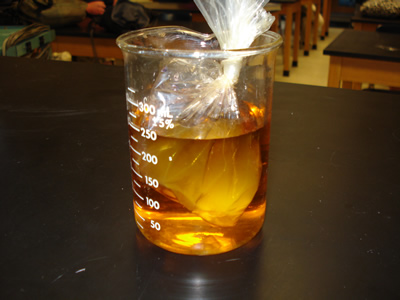Last week my science class watched our teacher dissect a chicken wing. We were not allowed to touch this chicken wing because it was raw and could contain some disease. The first layer of the chicken wing was the skin. The skin was a light yellow and look like it had small goose bumps on it. This layer was attached to muscle tissue. Then, our teacher showed us the muscles of the chicken wing. These muscles were pink and looked smooth. These muscles control our movement and they are connected to bone tissue. Tendons are what attach muscles to bone. We also saw fat tissue which was white and connected to muscle tissue. Our teacher pointed out a few ligaments. The ligaments were white and shiny. They were connected to bone tissue and covered joint surfaces. Cartilage was the last tissue we observed. It was white and seemed slippery. The cartilage helps bones move without touching each other and causing damage. During our chicken wing lab we did not find any nerve tissue in the wing. The reason we did this lab was to show how human arms are similar to chicken wings. Human arms are similar to chicken wings is because they also contain ball and socket joints. A difference between them is that our arms have different proportions than chicken wings.
Sunday, October 23, 2011
Tuesday, October 11, 2011
Diffusion Lab

In science class today, we conducted a diffusion lab. Diffusion is the process in which molecules spread from areas of high concentration to areas of low concentration. In this lab we first filled a baggie with a spoon of starch and some water. After tying the baggie, we added iodine to a beaker half-filled with water. Then, we dunked the baggie into the beaker and let it sit for fifteen minutes. After this time the starch and water inside the baggie was supposed to turn purple because iodine is an indicator. This part of the lab was called osmosis, when water molecules move across a selectively permeable membrane. Instead, our baggie was too thick and the water and iodine was unable to pass through it.
Picture: http://www.biologycorner.com/resources/diffusion04.jpg
Subscribe to:
Posts (Atom)